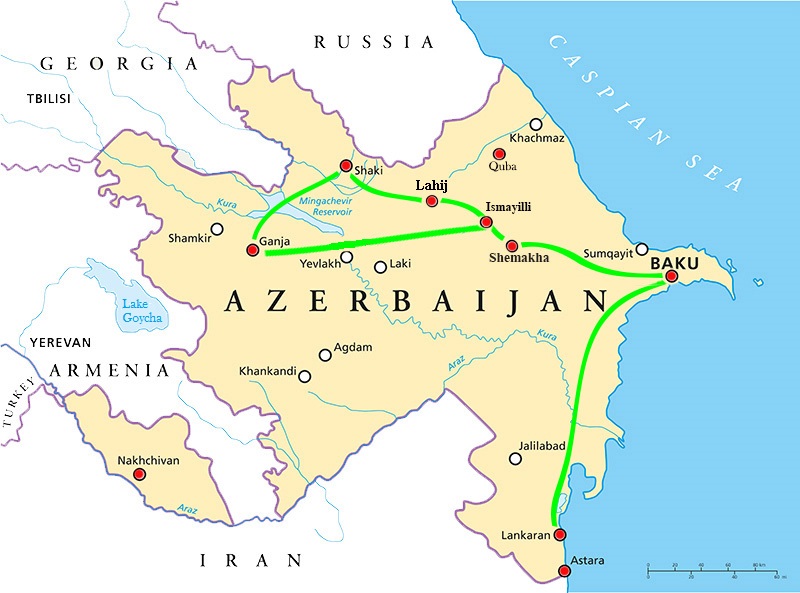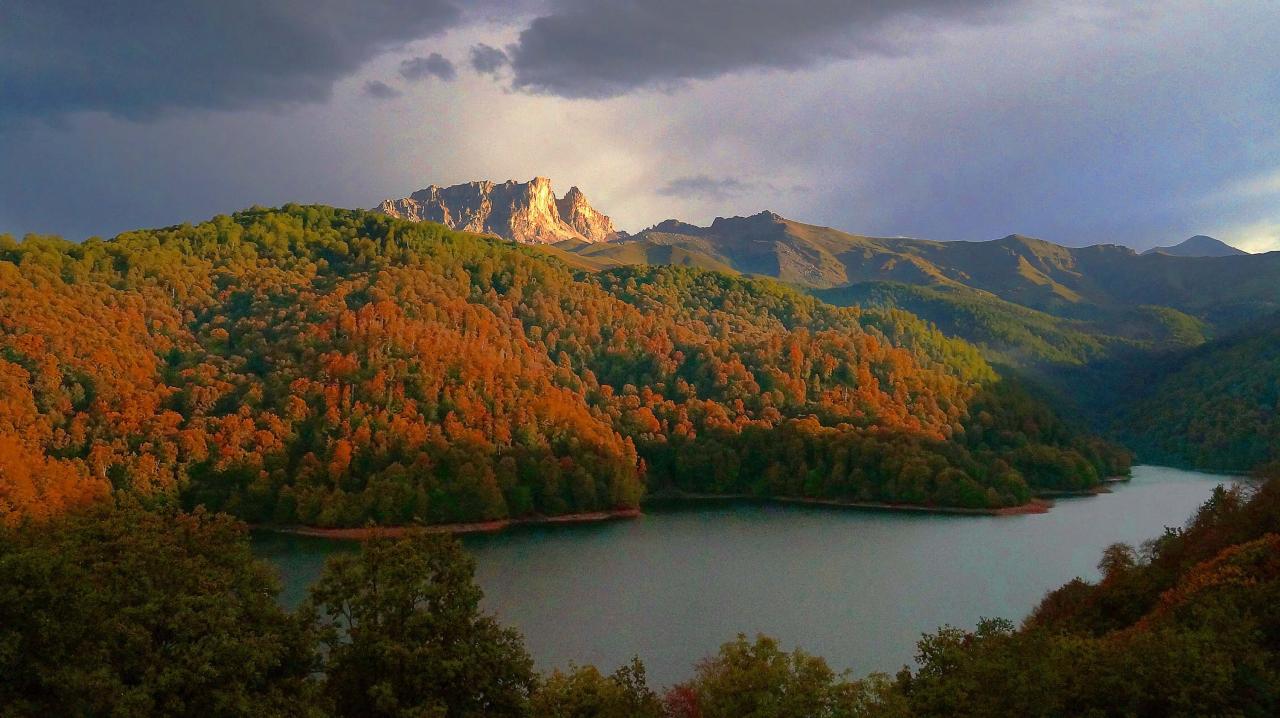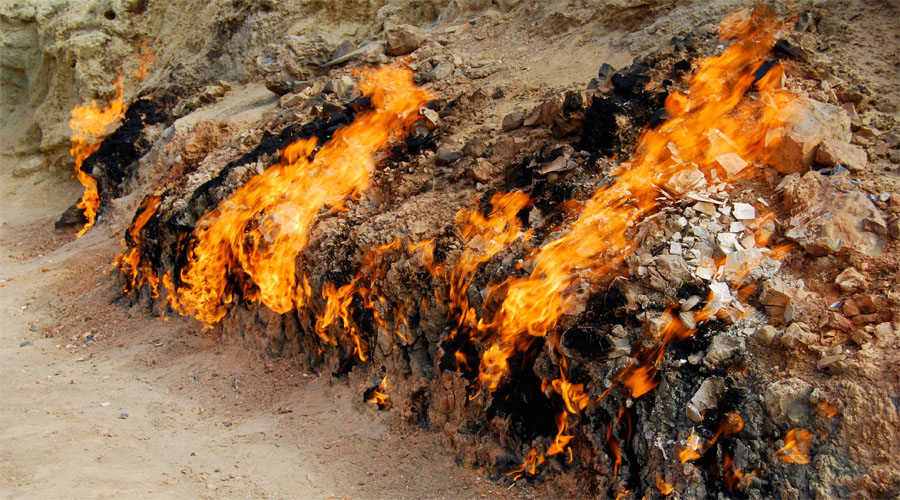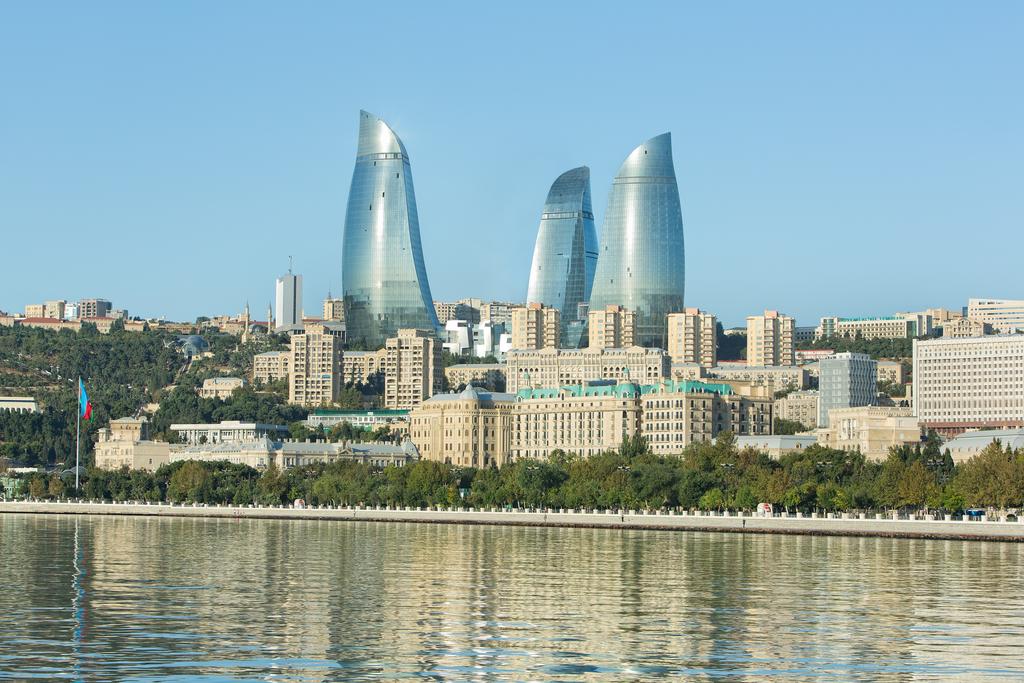Salam Azerbaijan
Duration: 8 Days
Map

Itineraries
Day 1: Arrival
Upon arrival in Baku today, you will be met by ENCTOURS driver and guide and transferred to your hotel.
Baku is a city of huge contrasts; minarets have been superseded by the iconic architectural landmark that is The Flame Towers, which against all the odds work well in this city that has always been about old and new.
While Old Baku had a reputation of a city blighted by oil extraction, it has recently been completely transformed into a 21st Century capital with seaside promenades and extraordinary architecture by such luminaries as Zaha Hadid.
Day 2: Baku
After breakfast, your guided walking tour of Baku includes the medieval walled city "lcheri Sheher" with it is narrow alleyways, historic caravanserais, mosques and Palace of the Shirvan Shahs, UNESCO Heritage site. We will see the Maiden's Tower (external view), UNESCO Heritage site the imposing mansions of the oil barons, built in the oil boom of 1870-1914 and Martyr's with its superb views over the Bay of Baku.
Complex of Shirvanshahs Palace was the last residence of the rulers of Shirvan State with the history of thousand. At mediaeval times this state was the most powerful state in Azerbaijan. The Shirvanshahs Palace is a two-storey building in an irregular, rectangular shape. In order to provide better illumination of the palace, the south-eastern part of the building was constructed on different levels.
Then visit we will visit Azerbaijan Carpet Museum. It has the largest collection of Azerbaijani carpets in the world. The museum has become a research-training and cultural-educational center where many events, such as exhibitions, international symposiums, and conferences, are held.
Plans to move the collection to a new purpose-built venue have been in the works since 2010 when Azerbaijani carpets were proclaimed "a Masterpiece of Intangible Heritage" by UNESCO. The structure of the building is intended to look like a rolled carpet. Designed by Austrian architect Franz Janz, the building took over six years to construct.
Overnight at the hotel in Baku. (B/L/-)
*Carpet Museum is closed on Mondays.
Day 3: Baku – Absheron – Baku, 60 km
After breakfast you will enjoy half day excursion to the Absheron Peninsula (30 km away from the city center), visiting the Ateshgah (or place of fire) a Zoroastrian Fire Temple and ethnographical museum Gala.
The Temple of Eternal Fire - Ateshgah - is an authentic Azerbaijani exotic. This territory is known for such unique natural phenomenon as burning natural gas outlets (underground gas coming onto surface contacts oxygen and lights up).
Visit Nobel House-Museum. Constructed in 1884, Villa Petrolea was a residence for Nobel brothers for almost 40 years. In 1879 they established the Brothers Nobel Oil Company – “Branobel”, which very soon became one of the biggest oil companies in the world.
Visit Heydar Aliyev Cultural Center.
Heydar Aliyev Center is a cultural center, projected as a complex structure that includes the auditorium (convention center), a museum, exhibition halls, administrative offices. The project of the center was designed by the winner of Pritzker prize and internationally recognized architect Zaha Hadid.
Overnight in Baku. (B/L/-)
*Heydar Aliyev Center is closed on Mondays.
Day 4: Baku – Shemakha – Lahij – Sheki, 350 km
Leaving Baku behind us, our journey takes us through beautiful landscapes on the way to Shamakhi.
Upon arrival in Shamakhi we will have a sightseeing of historical Djuma Mosque (10th century, reconstructed in the 19th century). This oldest and largest mosque in Azerbaijan, Shamakhi Djuma, according to the legend was built in the 8th century when Shamakhi was chosen as residence by an Arabian caliph. Built more than 1,200 years ago Shamakhi Djuma mosque still remains one of the largest cult structures of the Caucasus.
Then we will drive to Lahij village built in the 5th century B.C. on the canyon of the river Girdimanchay. The older villagers speak a dialect that is nearer to Farsi than Azeri and claim that Lahij is named for the Persian-Caspian town of Lahijun from which their ancestors supposedly were emigrated a millennium ago, bringing with them their famous skills.
We can meet there unique hand-made items from copper, adorned with carving in the form of oriental ornaments, knitted and weaved goods, wood and leather ware, souvenir knives and many other. Some items from Lahij were included in the collection of Louvre and Bern Museum. Here also we can enjoy beautiful master-class in the art of engraving copper craft.
*Trip to Lahij is subject to weather conditions.
Then we will arrive in Sheki. Overnight at the hotel in Sheki. (B/L/-)
Day 5: Sheki – Ganja, 150 km
One of the most ancient cities of Azerbaijan, Sheki is rightly called the architectural reserve of the country. Visit local bazar. Of particular interest to the tourists from all over the world is the Palace of Sheki Khans (1762) – a rare example of combining the national and palace architecture traditions. It is remarkable that during the construction of the palace, not a single nail was used, and the colored glass for shebeke (national mosaic) was brought from Venice.
There were many caravanserais in Sheki, which was famous for its trade. Two of them are still here today; the Upper and the Lower Caravanserais, both built in the 18th century.
Then we will visit a church of XII century in Kish that was visited by famous Norwegian adventurer Thor Heyerdahl.
Visit kelagai workshop and see how kelagai is produced. Depart to Ganja.
Overnight in Ganja. (B/L/-)
Day 6: Ganja – Ismailli – Baku, 360 km
Ganja is the second biggest city of Azerbaijan with more than a million populations. Ganja is the birthplace of the great Azerbaijani poet Nizami Ganjavi who made the invaluable contribution to the history of not only Azerbaijani literature but also the world literature. Nizami Ganjevi was born in Ganja in 1141. He was one of the most educated people of the time.
Today we will visit the 17th century Shah Abbas Mosque, Javadkhan Mousaleum (XIX century), the Orthodox church ( 1815),Nizami Mousaleum and the "Bottle House", local icon in Ganja decorated with 50,000 glass bottles. Visit Imamzade Mosque.
Return to Baku.
On the way to Baku we will visit Ismailli and Chateu Monolit, where we will have wine tasting and get information about wines produced in Azerbaijan.
Overnight in Baku (B/L/-)
Day 7: Baku – Gobustan – Baku
This morning we will leave Baku for Gobustan Historical Reserve (65 km far). The reserve is well known with its perfectly preserved rock paintings - petroglyphs - a kind of artistic "archive" of human evolution on the Earth. They reflect the history of this region for nearly 15,000 years - since the end of the era of the Upper Paleolithic till the Middle Ages. Before the start of the tour around Gobustan we will visit the interactive museum with the same name, where with the help of special programs and multimedia touch screens we will get information about the nature, the flora of Gobustan. In 2007 Gobustan was declared a UNESCO World Heritage Site.
During his visit to Azerbaijan Thor Heyerdahl had long been fascinated with the rock carvings that date back to about 8th-7th millennia BCE at Gobustan (about 30 miles/48 km west of Baku). He was convinced that their artistic style closely resembled the carvings found in his native Norway. The ship designs, in particular, were regarded by Heyerdahl as similar and drawn with a simple sickle-shaped line, representing the base of the boat, with vertical lines on deck, illustrating crew or, perhaps, raised oars.
Visit Mud volcanoes (upon the weather conditions, operated only when the roads are dry)
Return to Baku. Evening free to explore the capital. (B/L/D)
Day 8: Departure
In the morning transfer to the airport. Departure (-/-/-)
Additional Information
This tour is operated between April – October. Lahij and Mud volcanoes are subject to whether conditions
















